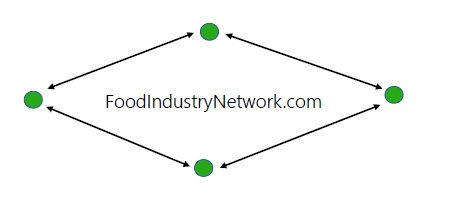Increased Group 1 rates advised under Enlist system

As more Ontario growers adopt Corteva Agriscience’s Enlist-branded stacked-trait genetics in soybeans and corn, they may need to adjust their approach to controlling volunteer corn.
Read Also
New pork research barn called a ‘game changer’
A new $20-million facility is expected to make Ontario a leader in cutting-edge swine research. “Our industry is poised to…
That was one message delivered by Thorndale-based Corteva field scientist Laura Smith during a research plot tour in early July at the company’s Tavistock location.
Why it matters: The technology offers weed and pest control options for growers but they’ll need to be aware of a potential volunteer corn problem.
Speaking on behalf of the research and development team to a gathering of Pioneer and Brevant seed sales representatives, Smith showed a pair of side-by-side plots comparing volunteer corn control under the Enlist system.
Enlist soybean genetics, featuring tolerance to 2,4-D choline, glyphosate and glufosinate within one gene, has been in the development pipeline since the mid-2010s. Its development is a response to the dicamba herbicide’s troubles with volatilizing in high temperatures, which can lead to damage in neighbouring non-target crops.
The Enlist active ingredient, a choline salt, remains stable as the thermometer rises.
In 2022, under the banner “Series A Enlist,” the genetics were available on a smaller subset of soybean varieties that Corteva saw as most important for combining the herbicide tolerances with other disease and pest-fighting traits.
For the 2023 growing season, Enlist technology was expanded in Canada for a wide range of soybean varieties, and widespread Canadian release of Enlist corn is now on the horizon.
In corn, stacked herbicide resistance is the same as in soybeans but also includes the FOP subgroup chemicals for grass control.
In future years when growers follow Enlist corn with soybeans, that eliminates FOPs for volunteer corn control. However, Smith said during the research tour that, due to a degree of antagonism between Enlist’s 2,4-D choline active ingredient and some other Group 1 active ingredients, there will be additional complexity with volunteer corn control using clethodim-based products like Statue.
Side-by-side plots at the Tavistock sites showed that spraying Assure II at what Smith described as “a lower rate” of 0.38 L/ha achieved “very little control” of non-Enlist volunteer corn.
“Group 4 herbicides, which encompass the Enlist technology, have been documented to antagonize Group 1 herbicides, including (those containing) quizalofop-p-ethyl (Assure II) and clethodim,” she told Farmtario.
“That means grass control with the combination of Enlist plus Assure II in the same tank will be lower than the efficacy you would achieve if you applied the Group 1 herbicide alone at the equivalent rate.”
In the neighbouring plot, Assure II application was increased to 0.75 L/ha, while the Enlist and Roundup rates remained the same. Volunteer corn control was 95 per cent or “nearly all,” according to Smith.
Side-by-side plots of Enlist beans following Enlist corn showed the effectiveness of increased rates of the clethodim-based Statue to control volunteer corn.
Smith said the presence of volunteer corn in the lower-rate plots shouldn’t concern growers. They’ll simply need to keep the increase rates in mind as they move into the Enlist technology.
“Volunteer corn control in soybeans should not be impacted,” she told Farmtario. “It is important that growers understand, however, that they must use a Group 1 with the active ingredient clethodim, as quizalofop active products will not control (Enlist volunteer) corn.”
Source: Farmtario.com

